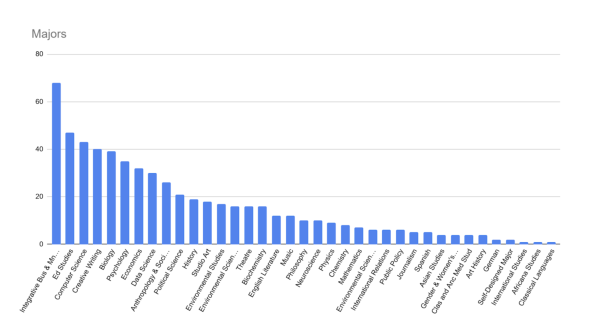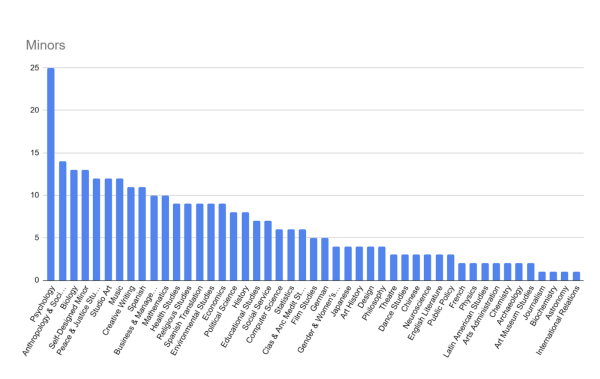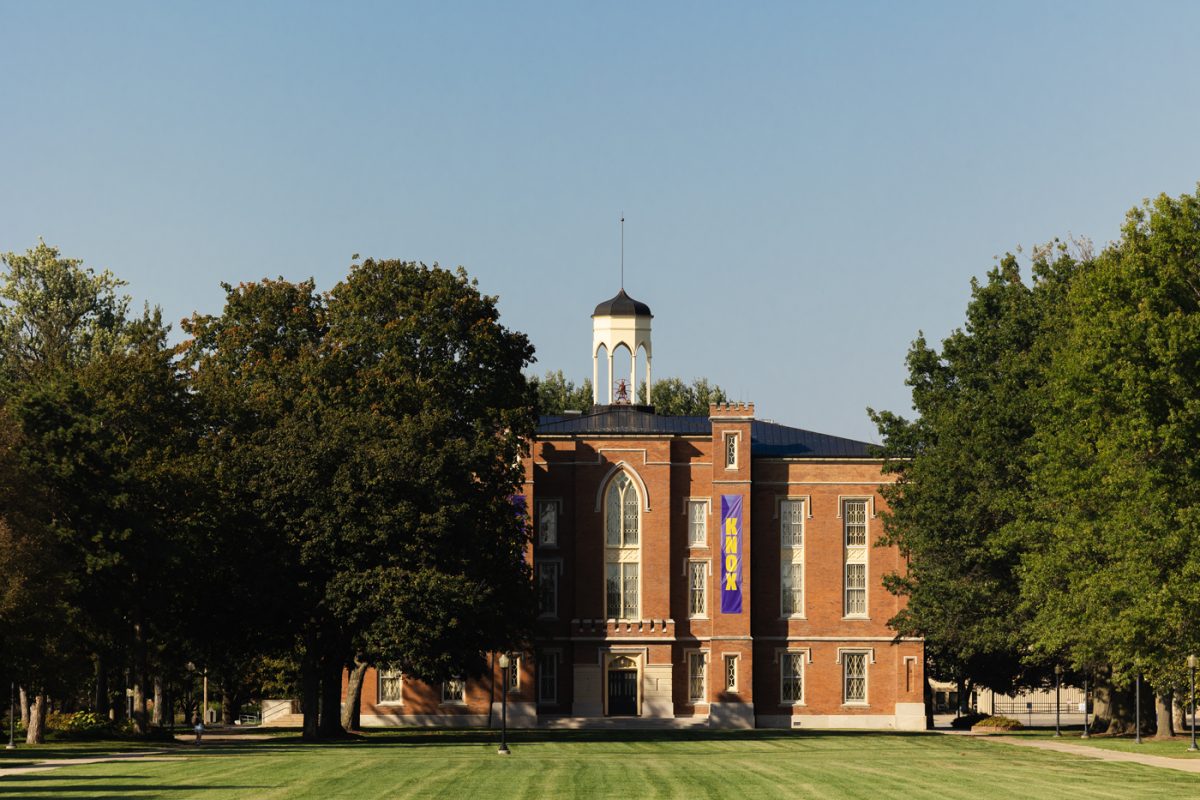The following graphs reflect the distribution of declared majors and minors at Knox College as of October 11, from the registrar. It includes recent declarations from students at the end of spring term 2024 and the first weeks of fall term 2024. It also excludes students who graduated from the class of 2024. Reflecting the enrollment loss of those graduated students, the overall count of declared majors dropped.


Over 80 students had declared integrative business and management, which is now down to 68. Educational studies, computer science, and creative writing all had about 60 students in the spring, and now have about 40 each.
In minors, psychology remained the top minor; self-designed minors, previously second, dropped to fourth; anthropology & sociology took second; and biology rose from fourteenth to third.
“[Computer science] and business are kind of the hot things right now, and that’s not just at Knox, that’s more or less across the board, especially as you get a lot more international students,” College Registrar Patrick Hathaway said.
Fluctuation in count from spring to fall is mainly due to graduation and sophomore declaration, rather than a drop in enrollment. All Knox students, in the spring term of their sophomore year, are required to declare their major. Some may declare earlier, but the goal is to introduce students to a variety of subjects before they enter a specific program.
“The idea behind it is that for those first two years that you’re here, you do more of a breadth; you take a variety of classes from a variety of different disciplines, see if your interests continue to lie where you thought they were when you came in,” Hathaway said.
As expected, the top four majors at Knox in spring 2024—integrative business and management, educational studies, computer science, and creative writing—remained the top four in the fall, while biology switched places with psychology to move to fifth.
In minors, psychology remained the top minor, but the overall count decreased by fifteen. Self-designed minors, previously second, dropped to fourth, with anthropology & sociology taking second and biology rising from fourteenth to third.
“Right now I would say that those tech-oriented programs and then business-oriented programs, sometimes business, management, economics, accounting, those types of fields, those are generally pretty much what’s been on the rise for the last 20, 30 years,” Hathaway said.
Significant variations in major or minor distribution over short periods of time are uncommon; rather, colleges and universities tend to see the “same interests with small variations,” Hathaway said.
“Right now, following the pandemic […] the theater department was having a very hard time recruiting students because the most recent incoming class of students were at home. They weren’t doing theater in high school, so theater recruitment was down,” Hathaway said.
A college may respond to decreased enrollment in a certain program by marketing towards students interested in those programs, or by making budget cuts to that program. The preferred course of action for an individual institution varies on several factors, including the size of the institution, how strongly they hold to liberal arts values, how the market trends look, and if there are competing factors.
“Knox, for example, is more likely to preserve programs like philosophy and English because they are so integral to the liberal arts experience, where larger state institutions may make greater changes to those programs,” Hathaway said. “What you often see is that some of those more popular programs in terms of funding, so your business school, makes a lot of money, and you take some of that money that your business school is making, and you use it to fund your philosophy program, your English program, that you want to have but may not necessarily be a strong revenue generator.”








Eleanor Lindenmayer • Nov 3, 2024 at 7:42 am
nice job making this a more interesting story than just the graphs! <3